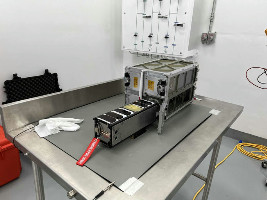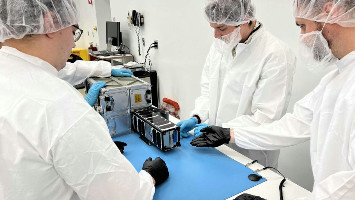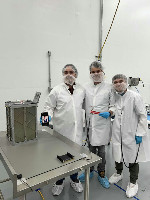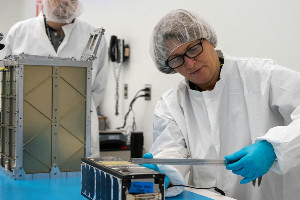| Satellite | KUbeSat-1 (KUbeSat1) |
|---|---|
| Type | CubeSat |
| Units or mass | 3U |
| Status | No signal? (Assuming no contacts based on social media updates and lack of SatNOGS reports as of 2024-12-22) |
| Launched | 2024-07-04 |
| NORAD ID | 60204 ? |
| Deployer | RailPOD [Tyvak] |
| Launcher | Firefly Alpha (ELaNa 43) |
| Organisation | University of Kansas |
| Institution | University |
| Entity | Academic / Education |
| Nation | US |
| Oneliner |
Use cosmic ray detector to study exposure and effect on crewed missions. |
| Description |
Science investigation mission that will use a primary cosmic ray detector to further understand exposure in Earth’s ionosphere and its effect on crewed missions. Study and understand high energy particles on two fronts.
This mission represents the first stepping stone in creating a fully-fledged satellite program at the University of Kansas (KU). With a successful launch, KU will expand the program to eventually allow for partnerships with public schools and other educational institutions. The expanded capabilities provided by this program will allow more amateur satellite service opportunities. This would allow grade schools to launch payloads into orbit furthering involvement in STEM opportunities. Having a successful first launch and infrastructure is crucial for the planned expansion of the satellite program. Moreover, KUbeSat1 will provide data that can be used across the globe in studies of the deep space particles. Understanding what particles pass through the Earth’s atmosphere is important to understand problems varying from solar storms to deep space radiation. As such, amateur operators around the globe may be able to help pull important scientific data needed for the understanding of Space. |
| Sources | [1] [2] [3] |
| Photo sources | [1] [2] [3] [4] |
| On the same launch |
Last modified: 2024-12-22











